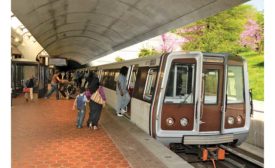Home » Keywords: » DC Metro
Items Tagged with 'DC Metro'
ARTICLES
Executive News
Second NYC Transit Veteran Joins DC Metro as Top Exec
Louis Berger names new chairman, sues former exec for corrupt practices penalties
Read More
DC Metro Plans Major Rebuilding
After service disruptions, contractors are set to do some needed agency work to include track and electrical upgrades
Read More
D.C.-Area Airport Authority Replacing Guideway Girders
Investigation Continues Into Longitudinal Cracks
Read More
The latest news and information
#1 Source for Construction News, Data, Rankings, Analysis, and Commentary
JOIN ENR UNLIMITEDCopyright ©2024. All Rights Reserved BNP Media.
Design, CMS, Hosting & Web Development :: ePublishing



